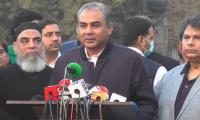According to an Indian analyst, the killing of four soldiers and a policeman in an encounter in north Kashmir’s Handwara region has “caused concerns and anguish in India’s security establishment.” While the actual death toll may be even thrice of what is being stated, the tensions in the Indian Army are palpable as the commanding officer of the 21 Rashtriya Riles, who was twice awarded with gallantry medal, was among those who lost their life. He was reportedly trapped and kidnapped. Then the next day, three CRPF personnel were killed in an alleged encounter; the deaths were due to clean headshots. Earlier, India had lost five elite commandos at the hands of local Mujahideen.
Official figures from India claim that from 1 April to early May about 36 militants have been killed and at least 20 security personnel – the Indian Army, CRPF and Jammu and Kashmir police -- have also lost their lives. The high rate of killings of security personnel are a wake-up call for all concerned, warn Indian security officials. Former Indian Army Commander Gen H S Panag has even argued that instead of organising spectacles, the Indian military must focus on fault lines in Kashmir now.
Not surprisingly, after the August 5, 2019 drastic action by the Modi Sarkar, massive lockdown throughout the Valley in the following months, arrest of all political leaders and tens of thousands of commoners, announcing to give domicile of residence to outsiders, the blame still comes to Pakistan. For India, all troubles originate from Pakistan, including the (non-existent) infiltration across the LoC. It thinks that local Kashmiris will accept their fate without showing any resistance.
But Pakistan is ready for any Indian misadventure. Chief of the Army Staff General Qamar Javed Bajwa has said the Indian Army will always get a "befitting response" to ceasefire violations along the Line of Control (LoC). There is "operational preparedness and high morale, continued vigilance and professionalism" among the troops on the LoC.
The ISPR chief has revealed alongside increased shelling along the LoC, the Indian Army has whipped up anti-Pakistan propaganda through its country’s media. He said the meeting chaired by Army Chief Gen Qamar Bajwa “took a serious note” of irresponsible statements of the Indian military leadership and CFV at the LoC. “Latest statements of Indian military leaders reveal frustration and demoralisation because of internal failures,” he remarked. Indian troops are using the people of occupied Kashmir as human shields while committing ceasefire violations along the LoC.
On the other hand, Azad Jammu and Kashmir (AJK) President Sardar Masood Khan has said that coupled with the occupational lockdown of August 5, the Covid-19 pandemic has imposed a twin lockdown on Kashmiris – “the first being more lethal than the latter”.
“Under the cover of Covid-19, Indian soldiers hunt down young boys and kill them in fake encounters. Posthumously, they are dubbed as militants supported by Pakistan. They do not release their bodies to families for fear of large funerals and instead bury them in unmarked graves,” he said.
Addressing a webinar, he warned that the most vicious step taken by India was to introduce the so-called new domicile rules that would open the floodgates for the ingress of Hindus from all over India to settle in Kashmir. “Kashmiris’ special rights to permanent residence, acquisition of property, education and employment – are all gone.”
Meanwhile, reports in the Indian media say while the country boasts of greater indigenization of weapons and ammunition, the Indian Army is unhappy over the quality of ammunition provided by the state-owned Ordnance Factory Board (OFB). The report had said that regular accidents occur with 105mm Indian Field Gun, 105mm Light Field Gun, 130mm MA1 Medium Gun, 40mm L-70 Air Defence Guns and main guns T-72, T-90 and Arjun tanks. There have been isolated cases in 155mm Bofors guns too. According to an earlier report by the Indian Army, on an average there was an ammunition-related accident every 5.5 days or once a week.
A general view of Islamabad city can be seen in this picture released on January 5, 2023. —...
People buy fish at the G-9 weekly bazaar in the federal capital as demand rises despite high white meat prices during...
Islamabad Capital Territory Police stand guard on the road of Islamabad. — AFP/FileOver the past decades,...
A group photo from the USAID’s Higher Education System Strengthening Activity's impactful four-day training on...
The picture shows Islamabad police personnel in this undated photo. — AFP/FileIslamabad : The capital city of...
Prof Ayaz Qureshi from University of Edinburgh,UK addressing an event.— Facebook@iubwp/File Islamabad : Prof Ayaz...







